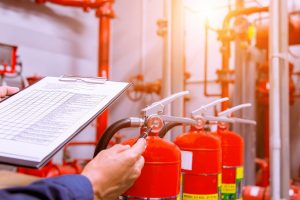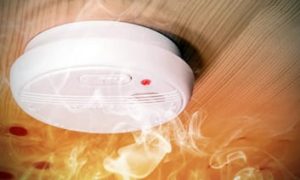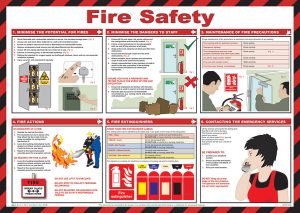It’s very important that individuals and companies understand the importance of Fire Safety.
 Fire Prevention
Fire Prevention
The best way to minimise the risk of fire is to understand the potential triggers of fire and put in place fire prevention measures that reduce the risk of fire occurring. Installing fire alarms, smoke detectors and other fire warning devices are very important in providing early warning of fire. Implementing fire safety plans and ensuring that all employees understand these plans, will ensure that employees escape the dangers of fire. Conducting regular fire risk audits is crucial if you want to maintain a work environment that minimises the risk of fire triggers.
 Potential Triggers
Potential Triggers
Fires can start in a wide variety of ways, but there are a number of triggers that commonly result in fires starting in the home and workplace. These include discarded lit cigarettes, faulty electrics & wiring, unattended cooking utensils, overloaded electric plug sockets and incorrect storage of combustible materials. The first step for any fire safety work is to identify the fire risks within your domestic or commercial environment and remove the risks. Implementing measures & procedures to minimise risk, including routine fire risk audits are extremely important.
 Installing Devices
Installing Devices
Even in a low risk environment, there is still a chance that a fire may start. Installing early warning systems will improve the chances of escape; fire alarms and smoke alarms are examples of such devices. Once alerted, people can follow fire safety evacuation procedures and exit a house or building as safely and quickly as possible. Fire response teams can be contacted and respond to a fire incident more quickly.
 Fire Safety Plans
Fire Safety Plans
Being alerted to a fire is important, but what’s more important is that every person in your home or workplace understands how to respond when they are alerted to a fire. The safety & well-being of every person is paramount. Clear & concise fire evacuation procedures that include assigning employees fire warden responsibilities, implementing safe exit routes from buildings and designating emergency assembly areas are important. Whether you are at home or in the workplace, it is important that there is a fire safety plan, and you and every member of your home or team understands the fire safety plan. Making people aware of the potential fire risks and triggers, how to activate fire alarms and the routes out of a building are all critical to minimising the risk to fire and improving safety.